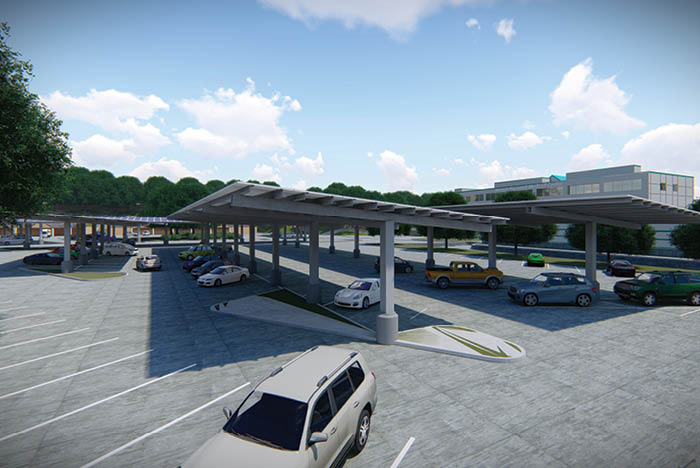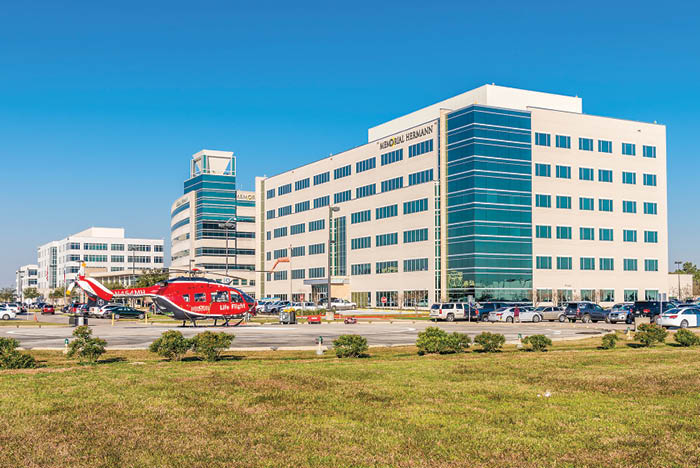Managing energy efficiency across multiple locations
Improving energy efficiency in any health care facility is a challenging endeavor. The complex systems, high levels of energy usage, 24-hour operations, and regulations and standards of care of these buildings distinguish them from other facilities.
In addition, the payback on health care projects must be fast, and facilities projects often compete for funds against other more visible, profitable priority projects, such as medical equipment acquisitions.
In multi-facility health care systems, these difficulties are compounded when the features and elements of buildings in a portfolio span a wide range.
Energy managers tasked with reducing energy consumption in these systems have to take both a broad view about long-term, systemwide energy-use goals and a more focused perspective that considers the needs, capabilities and potential of individual buildings.
Challenges and opportunities
Energy managers of multi-facility systems must grapple with various challenges inherent in overseeing large, diverse networks while also recognizing the many energy-savings opportunities that a wide range of facilities can offer.

Part of an 800-kilowatt solar array being installed at Adventist Health Sonora that will offset approximately 20% of the hospital’s annual electricity consumption
Image courtesy of Engie North America
Joshua Taylor, PE, CEM, from Jones Lang LaSalle, is the energy manager responsible for the Adventist Health portfolio of 21 hospitals and over 225 medical office buildings, clinics, physicians’ offices and outpatient service centers in California, Oregon and Hawaii.
“My biggest challenges are allocating my time across many locations and understanding their needs,” he says. “I deal with seven electric utilities, four natural gas companies and many water districts, so trying to take advantage of utility rebate programs is also a challenge.”
For Kathleen Morlang, energy manager at Penn Medicine in Philadelphia, keeping tabs on a number of facilities requires staying focused on the big picture. “The challenge is doing things at a higher level and not getting stuck in the weeds,” she says. “I don’t have time to pick out the lightbulbs, for example, because I am managing 8 million square feet. I don’t need to get involved in those little details.”
In addition to the many types of building uses in a multi-facility system, energy managers must contend with a range of factors, including the age of infrastructure, facility designs, and different levels of staff engagement and technical training. Hospitals, in particular, are challenging because of around-the-clock operation, which results in very high energy use as well as issues related to accessing facilities and maintaining patient comfort.
But Morlang, who oversees a system that includes three large urban hospitals, says the challenges of energy management in these buildings can be reframed as opportunities for substantial energy-efficiency gains.
“My focus has become much more central-plants oriented because it is a 24/7 operation,” she says. “Any change I make isn’t just saving energy during a 12- or 18-hour period. It is saving 24 hours a day, and it has a bigger impact.”
In multi-facility systems, energy managers also can take advantage of the many sites to test equipment and programs. For example, Morlang is currently trying out an additive used in chiller plants at a very small facility to see how it works. If it is successful, she can then expand its use to larger facilities, a process she has employed for other projects in the past.
The ability to do pilot projects saves time and resources, but it also is useful for energy managers during wider implementation.
“In the field, a lot of people don’t want to be the first to do something,” Taylor says. “Operating room setbacks is one example. So, if you have a site that already does that, then you can say, ‘This location has done it, and they’ve had great success.’ Having that in your back pocket goes a long way in rolling things out to other locations.”
Assessing performance
For energy managers, benchmarking provides crucial insight into the specific energy needs, challenges and opportunities of the facilities in their portfolios, and they use a variety of tools to track and measure energy use. The Environmental Protection Agency’s ENERGY STAR® Portfolio Manager and the American Society for Health Care Engineering’s Energy to Care Dashboard are two effective ways to monitor and analyze energy consumption in all types of facilities.

Aurora St. Luke's Medical Center in Milwaukee is part of a system with 28 hospitals in two states and over 500 supporting sites of care.
Image courtesy of Advocate Aurora Health
“The more sites that you have oversight of that are similar in use and design, the more you have to compare,” says Jedd Winkler, energy program manager at Advocate Aurora Health in Milwaukee, a system with 28 hospitals in two states and over 500 supporting sites of care. “But you have to make sure you’re appropriately comparing sites. A surgery center is going to have a different baseline or average than a clinic, a hospital or a pharmacy. You need to compare apples to apples.”
Hospitals are very large, complex facilities that operate 24 hours a day, and they will typically be the highest energy consumers, says Michael Roberts, PE, SASHE, CHFM, CHE, director of energy services at Atrium Health in Charlotte, N.C., which includes acute care hospitals, rehabilitation hospitals, medical office buildings and other facilities.
At the other end of the spectrum are medical office buildings, which are usually high performers since they operate limited hours and use less energy overall. However, comparing facilities in a single category may not reveal all the relevant details.
In the case of Atrium Health, the factors behind the facilities’ ENERGY STAR ratings, which range from 26 to 89, are not always clear cut. “We have some facilities we would improve if we could figure out why they are not performing well,” Roberts says. “It can be very difficult to understand why we have outliers.” In addition, some of the system’s oldest hospitals are its best performers because of knowledgeable operations staff and energy-minded facilities managers.

Atrium Health’s Carolinas Medical Center in Charlotte is the flagship for a network of facilities that includes acute care hospitals, rehabilitation hospitals, medical office buildings and other facilities.
Image courtesy of Atrium Health
The ENERGY STAR ratings of Penn Medicine’s hospitals, which span from 2 to 58, highlight the importance of considering the specifics of individual buildings. The system’s lowest performing hospital is a much older facility made up of nine different buildings and aging infrastructure.
Still, Morlang says, the facility has great potential from an energy-savings perspective. This past year, a chiller plant optimization project at this hospital resulted in a 15% drop in cooling costs, and Morlang anticipates the facility’s ENERGY STAR score will increase from 2 to 5.
And with the opening of a new Penn Medicine health care facility, a 1.5-million-square-foot building that will have a Leadership in Energy and Environmental Design (LEED) Gold certification, the range between higher- and lower-performing buildings in the system will be even wider.
Changes that deliver
With data in hand, energy managers in multi-facility systems must identify and prioritize projects from the systemwide level down to individual buildings.
At Adventist Health, the focus the last two years has been a broad strategy across its hospital system: a 14-megawatt on-site renewable energy network in all of the hospitals in California and Hawaii. Taylor says that the loss of a hospital in the 2018 Camp Fire in California followed by repeated power shutdowns were also motivation to develop a self-sustaining microgrid system that will be up and running later this year.
Roberts says two initial major projects in the Atrium Health system involved reprogramming the building automation controls to be more efficient and looking at areas where the facilities were overventilated.
“When we started our energy program, our goals were that staff outside of the plant operations department wouldn’t have to do anything, and they wouldn’t even notice changes happened,” Roberts says. “But we also educated them about what we were doing.”
At the building level, adjustments at smaller facilities — such as implementing schedules and standard set-point ranges in medical office buildings — can yield significant savings, but these facilities do not have much room to grow in terms of energy efficiency.
Thinking about potential gains is why Morlang has focused on the major systems of Penn Medicine hospitals. Still, while hospitals can offer more energy-savings opportunities, they also require more care around implementation, and the progress from changes can get lost over time.
“It’s easy to adjust machines and building control systems and improve energy performance,” says Michael Hatton, RPA, SMA, FASHE, CHFM, vice president of engineering services for Memorial Hermann Health System in Houston, which includes 12 acute care hospitals and 12 million square feet of facilities. “But as soon as that team moves on to the next task, those gains can quickly erode because of lack of training and overrides and not keeping up with equipment that has failed.”

Memorial Hermann Katy Hospital in Texas recently achieved the much-coveted goal of an ENERGY STAR rating of 100.
Image courtesy of Memorial Hermann Health System
In already high-performing buildings, moving the needle on sustainability outcomes is even more challenging. For example, Memorial Hermann Katy Hospital in Katy, Texas, started with an ENERGY STAR rating above 90. The facilities staff had to work hard to make the building more efficient by training staff, looking closely at energy usage and improving equipment functions, all without affecting patient comfort. In the last year, the hospital’s ENERGY STAR rating moved to 100, reaching a much-coveted goal.
Winkler’s approach at Advocate Aurora Health has focused on energy management and granular benchmarking processes rather than end products. “The pathway to success is setting up the culture of continuous improvement,” he says. “Energy performance is the result of facility operations excellence. Develop and empower the good people around you, be vigilant, celebrate your successes regularly and get buy-in. The building control measures and everything that comes along with that will follow.”
Relationships are key
Energy managers understand that maintaining relationships in a facility and throughout a system are key facets of successful programs. “The facility teams are going to know more about their locations than I ever will,” Taylor says. “Build those relationships with facilities teams, and leverage that knowledge base. There are no bad ideas, and a plumber is going to see something different than an HVAC technician or a facilities manager. You never know where a good idea is going to come from.”

A facility engineer reviewing building control graphical parameters for energy recovery of an outside air-handler unit at Memorial Hermann Katy Hospital.
Image courtesy of Memorial Hermann Health System
Facilities managers are often juggling many responsibilities, including accreditation and compliance, patient safety, and maintenance and operations. As a result, other projects can overshadow energy management.
But Hatton believes that facilities managers who make energy efficiency a priority can contribute significantly to their organizations. Over the last decade, improvements at Memorial Hermann have yielded $130 million in energy savings. “We’ve found the human element is a huge part of success with utilities,” he says. “What you need is a facilities manager who will champion a goal and focus his or her team on it” (see sidebar on page 19).
Taylor says that, ultimately, his role as an energy manager is to support facilities managers and help them reach their energy-savings goals. “I look to them to tell me where they think we can improve, what we should do, where we should focus,” he says. “I ask them, ‘Is there any kind of project that you’ve been trying to push through on capital that will improve the infrastructure of the hospital but is also going to have energy savings?’ If so, I’m there for them as a resource.”
Facilities managers are also important conduits between energy managers and the leadership of organizations. “If you don’t have a voice with the C-suite itself, make sure you have an advocate on your side who does have a voice,” Morlang says. “I’m very lucky that I have an executive director of facilities who reports directly to the CEO, and he’s a very big advocate of mine. That’s the reason I’m able to get my projects done.”
Connecting with leadership is essential in ensuring that projects come to fruition. But understanding how to convey information effectively is also important.
“Showing our finance team that we’ve reduced energy-use intensity a certain amount won’t make a big impact,” Roberts says. “Showing them a 20% budget reduction that is held year after year will get their attention.” In addition, telling the right stories and publicizing successes build momentum, and acquiring funding for future projects will be much easier, Morlang says.
Path to efficiency
The many features of multi-facility systems can make energy management difficult, but the rewards for successful projects can be significant. Knowing which projects are the right ones for a particular system to pursue requires a deep understanding of what is often a complex and diverse portfolio of facilities.
While having a dedicated energy manager on board to help guide the process is ideal, these systems still offer useful lessons about developing energy-savings programs for networks with or without energy managers and of all sizes and capacities.
“It’s amazing what you can do without having to spend a lot of capital dollars just by repairing what you have and tuning up your buildings,” Hatton says. “We’re fortunate to have an energy manager to help us as well, but it’s a group effort by all of us. You need to have people who have the right attitude and, together, they can improve the health care facility.”
Camille N.Y. Fink is a freelance writer based in Oak Park, Ill.





